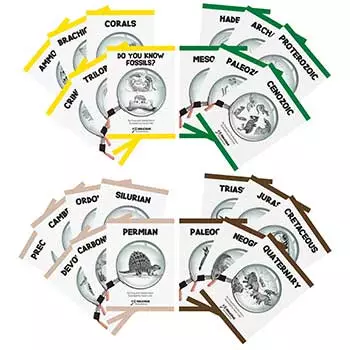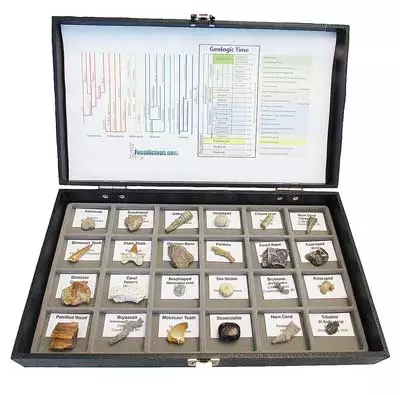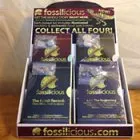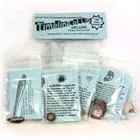Sign up for Lesson Plans, discounts & more!
Blastoids
Blastoids are an extinct class of echinoderms. They began in the Ordovician period when echinoderms were on the rise. The Ordovician period was a geologic time period that spanned nearly 42 million years. It is believed that blastoids may have had their roots in the Cambrian Period, about 540 million years ago. As a group they were most plentiful during the Carboniferous Period and persisted until their extinction at the end of Permian Period, about 250 million years ago.
Blastoids were pretty cool creatures, but they are also very common fossils. Any good fossil collection probably has a blastoid or two in it. They are actually related to crinoids, which is another common fossil find. Blastoid fossils, have a smooth calcium carbonate covering and are typically small, round and can easily fit in the palm of your hand. They were first found in western Kentucky, by British doctor and scientist James Parkinson. He described the fossil as an “Asterite,” meaning star-like. The term Asterite refers to a five-pointer star or a flower-like structure. Like all Echinoderms they had a five part radial symmetry.
When the blastoid was alive, the head, or theca, was sometimes attached to a stalk or column made up of stacked disc-shaped plates. The other end of the column was attached to the ocean floor. Blastoids without stems were attached directly to the ocean floor.
Blastoids at Dinner Time!
The feeding system of a blastoids was quite complex. Blastoids filtered food from seawater through arms and bristles that extended up from a series of structures on the top of the theca, which look like five petals of a flower. The structures were “food tubes” called ambulacra. In fact, there were different types of ambulacra that the food had to “pass” through. Food entered the brachiolar ambulacra, was transferred to the side ambulacra through the brachiolar pit, then transferred to the main ambulacra, and finally entered the mouth. Whew, talk about working up an appetite! Each of these ambulacra was roofed by cover plates.
I imagine these were like arms, that would aggressively grab the unsuspecting prey, similar to a venus fly trap. The process was probably was much more tame than this, but its fun to imagine. Each ambulacrum had many long, thin, fine structures called brachioles, which were used to trap food particles and bring them to the mouth. These brachioles were so delicate that they are lost when the creature dies. However, the ambulacra are still quite visible in blastoid fossils. Blastoids mainly ate very small plankton, that lived in murky water.
Blastoid Fossils For Sale at our sister site fossilicious.com
Check out some of the Educational Materials for sale on our sister site fossilicious.com.

interested in more? If so, you may want to check out our other sites:
fossilicious.com - Our online fossil and mineral rock shop.
rocksandminerals4u.com - An educational site about rocks, minerals, and geology.
Geologic Time
Geologic Time LineCenozoic Era
Quaternary
Neogene
Paleogene
Mesozoic Era
Cretaceous
Jurassic
Triassic
Paleozoic Era
Permian
Carboniferous
Devonian
Silurian
Ordovician
Cambrian
Archean Time
Hadean Time
Teachers Resources
Activities for Education and Fun
Earth Science Lesson Plans
Activities For Kids
Fossil Lesson Plans
Fossil Activities
Education Articles
Coloring Pages
Dinosaur Coloring Pages
Montessori Materials
Geology Club
Fossil Hunting
 |
 |
 |




